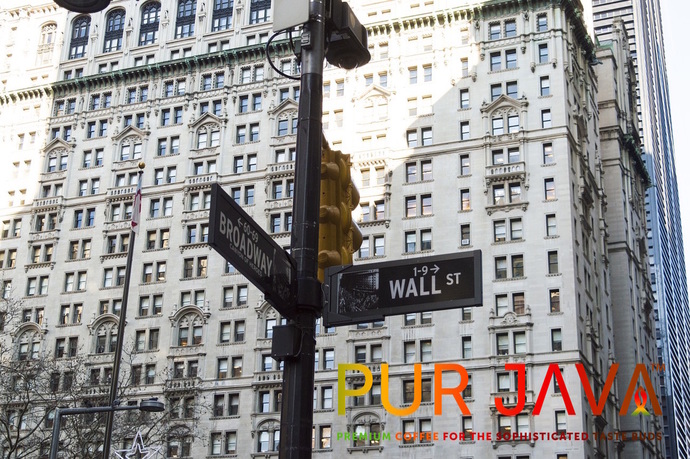 Private Stock Market Still operating under the radar today and prior to the development of the Public Stock Market, there was the Private Stock Market. Nearly 450 years ago, there was no such place as Wall Street; and since that time, history has changed that same dirt path into the financial center for all companies who have plans of one day going public. Many people are frightened away from the Private Stock Market due to its apparent complexities of investing. They never learn of its colorful history or its role in the American economy; how stocks are created privately, and then sold and bought by investors is still a mystery to many people today. Wise investing is indeed a challenge that requires serious individuals to take action and control over their own financial future, opening the door for decisions they are forced to make. The Private Stock Market is comprised of all the individual marketplaces and the total community of interests that maintains them; and it is currently regulated closely by the State Corporation Commission in the state the business was incorporated in and by the Securities and Exchange Commission (SEC), created by the Securities and Exchange Act of 1934. In the early 1600’s, you might hear of the “Dirt Path,” which took its name from a wall of brush and mud built alongside it shortly after New York was founded as a Dutch trading post in 1609. The wall, later improved with a wooden fence, was built to keep cows in and Indians out. Although little is known about the wall’s success with cows, by 1626, Indians were certainly allowed to enter the early business community – at least long enough to sell Manhattan for $24.00 and an assortment of beads. Early merchants had many interests. They bought and sold commodities such as furs, molasses, and tobacco; they traded in currencies; and they insured cargos and they speculated in land. They did not, however, formally invest in stocks and bonds; for even as late as George Washington’s inauguration, there was no securities exchange. In 1789, the first Congress of the United States met in Federal Hall at the same place where George Washington had been inaugurated earlier that year as President. The first order of business was to authorize the issue of $80 million dollars in government bonds to absorb the cost of war. Two years later, bank stocks were added to government bonds when Alexander Hamilton, then Secretary of the Treasury, established the nations’ first bank, the Bank of the United States, and offered private securities for the first time. Now, there were securities to trade privately, but there was still no organized market in New York. Investors, by word of mouth, indicated their interest in any available issue through New York coffeehouses or by advertising in the newspapers. As the list of securities grew with more bank stocks and newly-formed insurance companies, investors were quietly getting rich under the noses of many Americans who were too busy just trying to survive. By early 1792, individuals were enjoying the first bullish market in history. Several merchants, encouraged by the increased activity, kept a small inventory of securities on hand to be sold over-the-counter, much like they are today. Today’s over-the-counter market got its name from the early trading on the private stock market. Business was booming and as many as 100 shares would be traded on some days. New York businessmen began to schedule stock and bond auctions, as they had for commodities. Soon, several leading merchants organized a central auction at 22 Wall Street, where securities were traded daily at noon. What has truly separated the private stock market from time past until today is the fact that the private stock market is the only place where owners create a company, become millionaires quietly, and everyone else works for them. Public Stock Market This country’s first stock exchange was established in Philadelphia, Pennsylvania in 1790. On March 21, 1792, concerned Wall Street leaders met at Corre’s Hotel to establish an improved auction market that would better serve their own interests. On May 17, 1792, twenty-four men signed a document, agreeing to trade securities only among themselves, to maintain fixed commission rates, and to avoid other auctions. These men are considered to be the original members of the New York Stock Exchange. For a while, the new broker’s union met under the aging buttonwood tree that faced 68 Wall Street, but they soon moved indoors when the Tontine Coffee House was completed in 1793 at the northwest corner of Wall and William Streets. They prospered and moved into larger quarters in what is now 40 Wall Street. On March 8, 1817, the members adopted a formal constitution, creating the New York Stock and Exchange Board. Every morning a list of all the stocks to be auctioned was read to the assembled board members, who then made bids and offers while seated. Only members were allowed to trade, and the privilege to sit at the auctions cost $25.00. The fee was later raised to $400.00. To this day, a member of the NYSE is said to own a “seat,” although he or she is never seated while trading. The building currently occupied by the NYSE was completed in 1903. Brokers who were not able to afford a seat on the Board or who simply refused membership often found it difficult to make money from government bonds, bank securities and private companies because they could not sell the securities of good companies as once before. By 1850, new companies were being created; and gold had been discovered in California, causing the country to turn its attention to the mining companies of the western states. Mining stock and railroad shares were especially popular. Because the Board could not get the attention it desired, many eager non-members who could not afford a seat or office space traded in the street. By the 1870s, the corner of William and Beaver Streets filled daily with the earlier stage stock broker shouting out orders to buy and sell, earning them the name “curbstone brokers;” selling securities privately to receive a commission from the creators of the companies who were enjoying the cash flow to run their businesses. In 1908, Emanuel S. Mendels, Jr. a leading curbstone broker salesman, organized the Curb Market Agency, which developed appropriate trading rules but had little enforcement power. In 1911, Mendels and his advisors established a constitution and formed the New Curb Market Association. On the morning of June 27, 1921 Edward McCormick, the Curb Market’s Chairman, led the curbstone brokers salesmen to the newly completed building on Trinity place behind the Trinity Church on Wall Street. They sang the “Star Spangled Banner” and went inside to begin their first session on the new trading floor. In 1953, The New York Curb Exchange, as it was called after 1928, adopted its present name: The American Stock Exchange.
1 Comment
|
Archives
March 2023
Categories |

 RSS Feed
RSS Feed



